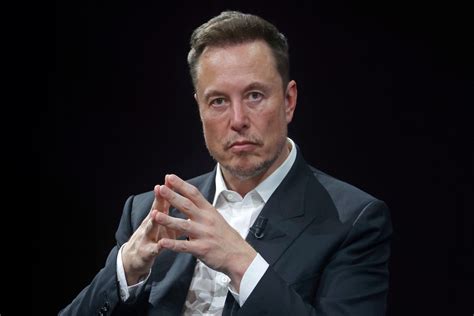
Elon Musk unveiled the latest iteration of the Optimus humanoid robot, touted as his company’s “biggest ever product launch,” showcasing advancements in dexterity and autonomy aimed at performing household chores and potentially revolutionizing various industries. The updated robot, demonstrated in a video released by Tesla, exhibits improved walking speed, balance, and object manipulation capabilities, fueling speculation about its future role in manufacturing, logistics, and even domestic settings.
The video presentation, accompanied by Musk’s commentary on X (formerly Twitter), emphasized the robot’s end-to-end deep learning, allowing it to navigate complex environments and perform tasks without pre-programmed instructions. This represents a significant leap forward, according to Musk, bringing Tesla closer to mass production and deployment of Optimus robots in the near future. While specific details regarding pricing and availability remain scarce, the demonstration has reignited the debate surrounding the potential impact of humanoid robots on the workforce and society at large. The unveiling also serves as a high-profile update on a project initially announced in 2021, setting a new benchmark for Tesla’s ambitions beyond electric vehicles and energy solutions.
Advancements in Dexterity and Autonomy
The core of the Optimus update lies in its enhanced dexterity and autonomy, showcased through video demonstrations of the robot performing delicate tasks. The robot’s hand dexterity has seen considerable improvement, allowing it to handle small and oddly shaped objects with greater precision. The video depicts Optimus picking up eggs without breaking them, sorting blocks by color, and manipulating tools, highlighting the fine motor skills achieved through advanced neural networks.
“Optimus can now do a number of things completely autonomously,” Musk stated on X, emphasizing the robot’s capacity to learn and adapt to new situations without human intervention. This end-to-end deep learning approach allows the robot to perceive its environment through cameras and sensors, process the information, and execute actions based on learned patterns. This contrasts with earlier iterations of Optimus, which relied more heavily on pre-programmed routines and remote control.
The advancements in autonomy extend beyond object manipulation. Optimus now demonstrates improved walking speed and balance, enabling it to navigate more efficiently through various terrains. The video shows the robot walking steadily, recovering from simulated disturbances, and adapting its gait to uneven surfaces. These enhancements are crucial for Optimus to operate effectively in real-world environments, where unpredictable conditions are commonplace.
Tesla has also focused on improving the robot’s perception capabilities, allowing it to better understand its surroundings. Through advanced computer vision algorithms, Optimus can identify objects, recognize faces, and interpret gestures, enabling it to interact more naturally with humans and its environment. This enhanced perception is essential for Optimus to perform complex tasks, such as navigating crowded spaces, avoiding obstacles, and responding to verbal commands.
Potential Applications and Industry Impact
Musk envisions Optimus as a versatile robot capable of performing a wide range of tasks across various industries. He has repeatedly emphasized its potential to address labor shortages and improve productivity in sectors such as manufacturing, logistics, and agriculture.
In manufacturing, Optimus could automate repetitive and physically demanding tasks, such as assembling parts, welding components, and painting surfaces. Its dexterity and precision would enable it to handle delicate operations that are currently performed by human workers, reducing errors and increasing efficiency. The robot could also work in hazardous environments, such as those involving exposure to toxic chemicals or extreme temperatures, protecting human workers from harm.
The logistics industry could also benefit significantly from Optimus. The robot could automate tasks such as picking and packing orders, loading and unloading trucks, and sorting packages. Its ability to navigate complex environments and manipulate objects would make it well-suited for working in warehouses and distribution centers, improving the speed and accuracy of logistics operations. Moreover, the humanoid form factor allows Optimus to utilize existing infrastructure designed for humans.
Agriculture is another sector where Optimus could play a transformative role. The robot could automate tasks such as planting seeds, harvesting crops, and weeding fields. Its ability to work in all weather conditions and its endurance would enable it to perform these tasks more efficiently than human workers, increasing crop yields and reducing labor costs.
Beyond these industries, Musk also sees potential for Optimus in domestic settings. He envisions the robot as a personal assistant capable of performing household chores such as cleaning, cooking, and laundry. Optimus could also provide companionship to elderly or disabled individuals, helping them with daily tasks and improving their quality of life.
Challenges and Criticisms
Despite the advancements showcased in the recent demonstration, the development of Optimus still faces significant challenges. One of the main hurdles is achieving true autonomy, enabling the robot to operate reliably and safely in unpredictable environments without human supervision. This requires developing sophisticated artificial intelligence algorithms that can handle complex situations and adapt to changing conditions.
Another challenge is improving the robot’s energy efficiency. Current prototypes of Optimus consume a significant amount of power, limiting their operational time and requiring frequent recharging. Tesla is working to improve the robot’s energy efficiency through advancements in battery technology and motor design.
The cost of producing Optimus is also a concern. The robot is currently expensive to manufacture due to its complex design and advanced components. Tesla needs to reduce the cost of production in order to make Optimus affordable for a wider range of customers.
The unveiling of Optimus has also drawn criticism from some quarters. Skeptics question the feasibility of Musk’s ambitious claims, pointing to the historical challenges in developing truly capable humanoid robots. Some critics argue that Tesla is overhyping the potential of Optimus in order to attract investors and boost its stock price.
Concerns have also been raised about the potential impact of Optimus on the workforce. Critics argue that the widespread adoption of humanoid robots could lead to significant job losses, particularly in sectors that rely heavily on manual labor. This raises important questions about the need for workforce retraining and social safety nets to mitigate the potential negative consequences of automation.
Musk’s Vision and Timeline
Musk has repeatedly stated his belief that Optimus has the potential to be more valuable than Tesla’s electric vehicle business. He envisions a future where millions of Optimus robots are working alongside humans, contributing to economic growth and improving quality of life.
While Musk has not provided a specific timeline for the mass production and deployment of Optimus, he has indicated that Tesla is making significant progress towards this goal. He has stated that Tesla plans to begin limited production of Optimus robots within the next few years, with the aim of scaling up production as technology matures and costs decline.
Musk’s vision for Optimus is closely tied to his broader ambitions for artificial intelligence and robotics. He believes that these technologies have the potential to transform society in profound ways, creating new opportunities and solving some of the world’s most pressing challenges. However, he also acknowledges the potential risks associated with these technologies and emphasizes the need for responsible development and deployment.
Technical Specifications and Design
While Tesla has not released a comprehensive list of technical specifications for Optimus, several key details have emerged through demonstrations and public statements. The robot is designed to be approximately human-sized, with a height of around 5’8″ and a weight of around 125 lbs. It is powered by a battery pack located in its torso, which provides several hours of operational time.
Optimus features a humanoid form factor, with two arms, two legs, a torso, and a head. Its hands are designed to be highly dexterous, allowing it to manipulate a wide range of objects. The robot’s head contains cameras and sensors that provide it with visual and auditory perception.
The robot’s movements are controlled by a network of actuators and motors, which are powered by the battery pack. Tesla has designed these actuators and motors to be energy-efficient, allowing Optimus to operate for extended periods of time without needing to be recharged.
The robot’s software is based on Tesla’s Autopilot AI, the same AI system that powers Tesla’s self-driving cars. This AI system allows Optimus to perceive its environment, plan its actions, and execute tasks autonomously. Tesla is continuously improving the robot’s software through machine learning and data analysis.
Comparison to Other Humanoid Robots
Optimus is not the first humanoid robot to be developed. Several other companies and research institutions have been working on humanoid robots for decades. However, Optimus stands out from these other robots in several key ways.
One key difference is Tesla’s focus on mass production and affordability. While other humanoid robots are often expensive and produced in limited quantities, Tesla aims to mass produce Optimus and make it affordable for a wider range of customers. This is a key part of Musk’s vision for Optimus, which is to make it a ubiquitous tool that is used in homes, businesses, and industries around the world.
Another difference is Tesla’s focus on end-to-end deep learning. Other humanoid robots often rely on pre-programmed routines and remote control. Optimus, on the other hand, is designed to learn and adapt to new situations without human intervention. This makes it more versatile and capable of performing a wider range of tasks.
Finally, Optimus benefits from Tesla’s expertise in artificial intelligence, battery technology, and motor design. These technologies are essential for creating a humanoid robot that is both capable and affordable.
The Broader Context of AI and Automation
The development of Optimus is part of a broader trend towards increasing automation in various industries. Artificial intelligence and robotics are rapidly advancing, and these technologies are increasingly being used to automate tasks that were previously performed by human workers.
This trend has the potential to bring significant benefits to society, such as increased productivity, lower costs, and improved quality of life. However, it also raises important questions about the future of work and the need for workforce retraining and social safety nets.
As automation becomes more prevalent, it will be increasingly important for workers to develop skills that are complementary to AI and robotics. These skills include creativity, critical thinking, problem-solving, and communication. Workers who can adapt to the changing demands of the labor market will be best positioned to succeed in the age of automation.
Governments and educational institutions also have a role to play in preparing workers for the future of work. This includes investing in workforce retraining programs, promoting STEM education, and providing social safety nets to support workers who are displaced by automation.
FAQ about Tesla’s Optimus Robot
Q1: What is the primary purpose of Tesla’s Optimus robot?
A1: The Optimus robot is designed to perform a wide range of tasks, particularly those that are repetitive, dangerous, or require fine motor skills. Elon Musk envisions Optimus assisting in manufacturing, logistics, agriculture, and even household chores, aiming to improve productivity and address labor shortages. The key focus is on automating tasks that are currently performed by humans, freeing them up for more creative and strategic work.
Q2: What are the key advancements demonstrated in the latest Optimus prototype?
A2: The latest Optimus prototype showcases significant improvements in dexterity, autonomy, and mobility. Specifically, it can now perform delicate tasks like handling eggs without breaking them and sorting objects by color. Its walking speed and balance have also been enhanced, allowing it to navigate more efficiently through various terrains. Moreover, the robot’s end-to-end deep learning capabilities enable it to learn and adapt to new situations without pre-programmed instructions, representing a crucial step towards true autonomy.
Q3: When can we expect to see Optimus robots available for purchase?
A3: While Elon Musk has not provided a precise timeline, he has indicated that Tesla plans to begin limited production of Optimus robots within the next few years. The company aims to scale up production as the technology matures and costs decline. However, the exact availability will depend on overcoming several technological and manufacturing challenges, including improving energy efficiency, reducing production costs, and achieving true autonomy.
Q4: What are the potential concerns regarding the widespread adoption of humanoid robots like Optimus?
A4: There are several potential concerns associated with the widespread adoption of humanoid robots. One major concern is the potential for job displacement, particularly in sectors that rely heavily on manual labor. This raises questions about the need for workforce retraining programs and social safety nets to mitigate the negative consequences of automation. Other concerns include ethical considerations regarding the use of AI, the potential for misuse of robots, and the need for regulations to ensure their safe and responsible deployment.
Q5: How does Tesla’s Optimus robot compare to other humanoid robots currently in development?
A5: Tesla’s Optimus robot distinguishes itself from other humanoid robots through its focus on mass production, affordability, and end-to-end deep learning. While many other humanoid robots are expensive and produced in limited quantities, Tesla aims to make Optimus a ubiquitous tool used in homes, businesses, and industries around the world. Additionally, Optimus benefits from Tesla’s expertise in artificial intelligence, battery technology, and motor design, which are essential for creating a capable and affordable humanoid robot. The integration with Tesla’s Autopilot AI also provides a unique advantage in terms of perception and autonomous navigation.
The demonstration of the latest Optimus prototype marks a significant milestone in the development of humanoid robots. While challenges remain, the advancements showcased by Tesla highlight the potential of these robots to transform various industries and aspects of daily life. As technology continues to evolve, the role of humanoid robots in society is likely to expand, raising important questions about the future of work, ethics, and the relationship between humans and machines.









